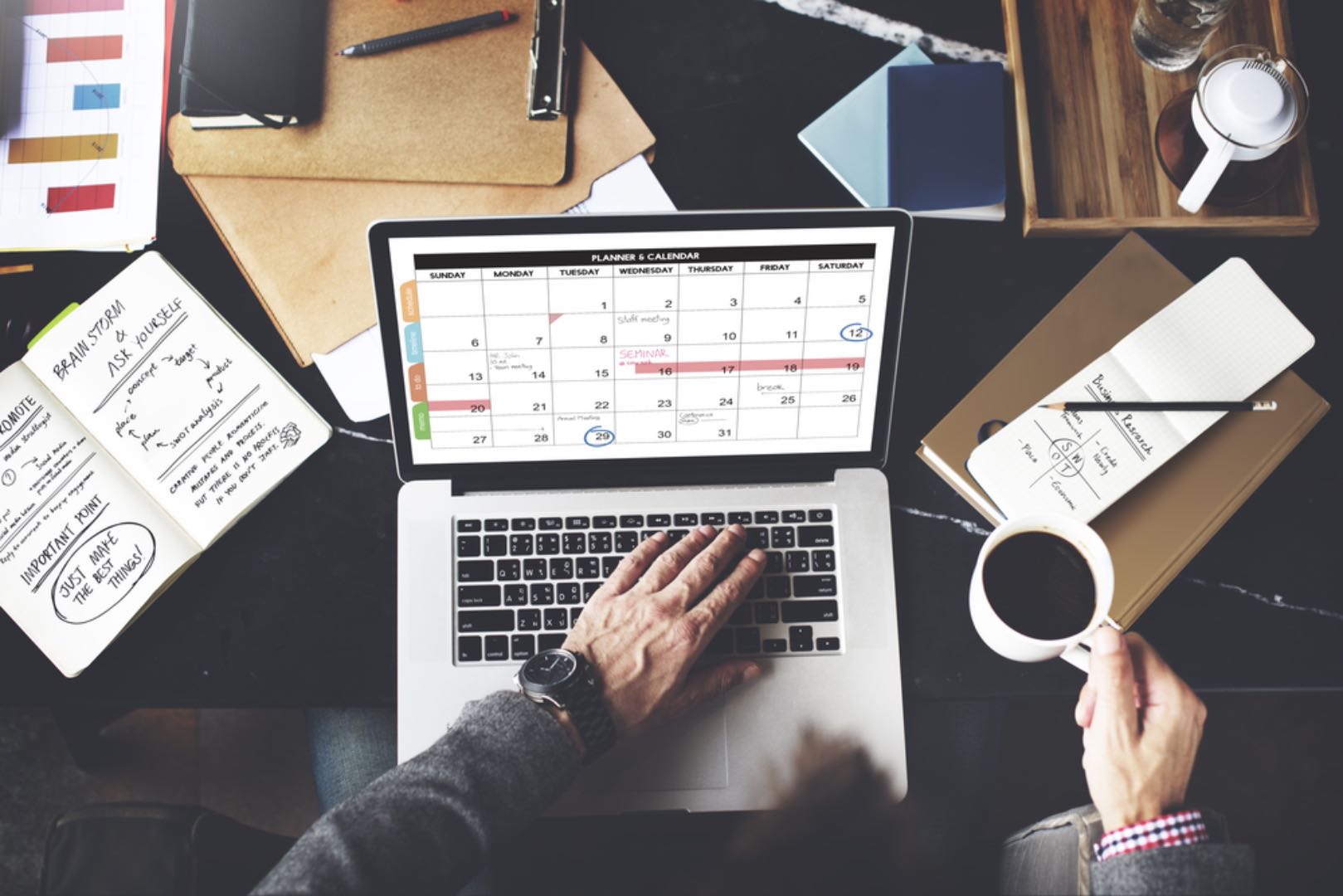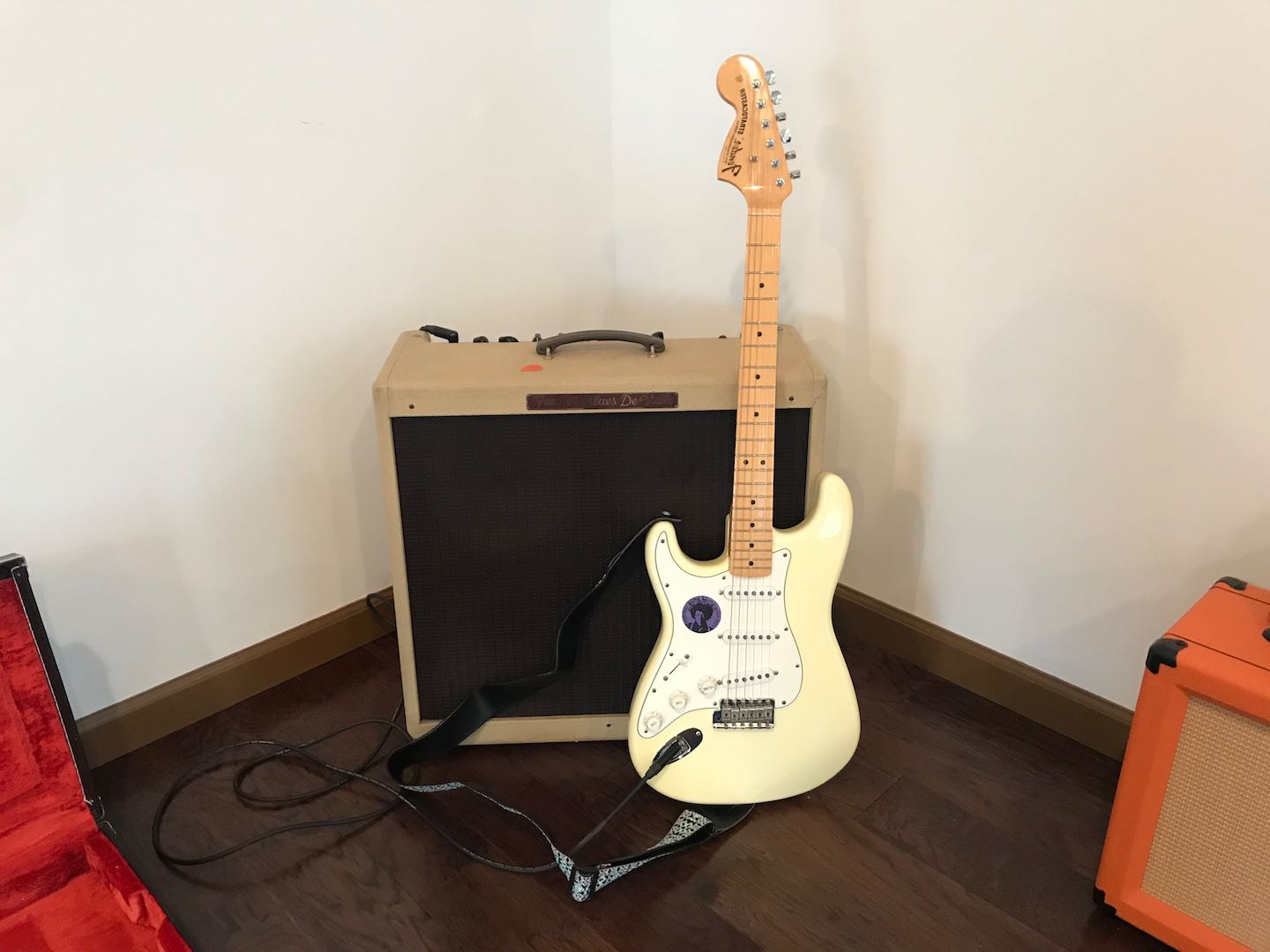For employees who typically spend 40 hours a week in an office, working from home has escalated anxiety and confusion.
Due to the self-quarantine mandates during this global crisis, this anxiety and confusion intensify day-by-day.
But many have been at the working-from-home game for a long time, including me.
Besides a small stretch with a local digital marketing agency around 2015 and a few part-time hours as a UPS driver, I haven’t set foot in an office since 2008.
My reasons for leaving the office lifestyle back in 2008 were due to a lack of leadership and productivity at the Fortune 500 employer.
Sometimes work felt like a practice in dorm room politics, and this office atmosphere eventually led to the failure of that company.
My mission was to take on freelance writing full time, which forced me to learn time management skills for my new no-office work lifestyle.
After about six months of self-training in productivity habits for the stay-at-home worker, I finally felt comfortable and capable of producing quality work from home.
Yes, six months.
And now others are trying to get into a groove in a matter of days.

Working from home requires discipline in many elements, which I’ll explore below.
Once implemented into the everyday working-from-home situation, these tips will allow you to get more work quality done in less time and with less stress.
1. Set Daily Routine by Planning Week
People struggle with setting routines within office settings, and this struggle only gets worse when working from home.
A lack of routine slows progress and productivity on just about everything because the brain is in constant reactive mode.
My typical Monday through Friday schedule features blocked periods from 6:30 a.m. to 5 p.m. every single day.
But due to the current circumstances that have my pre-schooler being homeschooled and running around, my normal strict routine has been drastically altered.
With that said, try to get into a daily routine – even if it’s a loose one for a few days.
Structure your day as close to your normal days of in-office work.
Get up at the same time, and do what you typically did, whether a quick workout or breakfast with the family or a coffee and the news.
If you showered, then got dressed, stick to it.
The process itself will set you on a path of normalcy all day (though don’t worry about working in pajamas all day…)
Also, a good flow to get in while working from home is taking the first portion of your Monday and planning all your big tasks for the week.
If you’re going to work on a proposal, and need three hours, either chunk that time all for one day, or divide it between multiple days (an hour Tuesday – draft; an hour Wednesday – edit; an hour Thursday – polish).
2. Don’t Multitask
Multitasking is the world’s greatest fallacy.
Those who are great multitaskers typically create garbage work because they can’t entirely focus on the project at hand, whether that’s something as simple as answering an email or as time-consuming as writing a blog post.
When the mind is scattered, the result is sloppy work.
I’ve dealt with fellow employees who have been on meetings while texting or editing an email.
When the meeting ends, these multitaskers are a few steps behind because they have to redo everything they were working on during that meeting – all while not absorbing any knowledge from that meeting (if it was a productive one with an agenda and clear roles of who should be talking).
When working from home, it’s much easier to find yourself multitasking.
Many think they can get more done in less time, which results in additional downtime.
Hey – you’re home and have the freedom to make your hours, so why not get more done in less time?
Sadly, many think multitasking is the solution.
It isn’t.
This has been proven over and over.
If you’re working on one task, keep the mind focused on just that task.
You’ll finish the job quicker, and the quality will be much better.
Don’t just do this at work.
Repeat in all of life, especially when talking to loved ones or friends.
Focus on the conversation at hand, not your phone, or whatever thoughts are circulating in your head.
The quality of your life will ascend – and quickly.
3. Block Time for Projects

Many workers struggle with completing multiple tasks on a timely basis because they don’t incorporate blocked time throughout the day.
This is where blocking amounts of time is crucial, whether that blocked time is a half-hour, an hour, or three hours.
Say you’re working on three major tasks for the week (e.g., creating a client proposal, editing a newsletter, and outlining a new business service).
You’ll get much more completed if you blocked periods of the day dedicated to each of those tasks and the other tasks that arrive with everyday life, like:
- Emails.
- Conference calls.
- Lunch working out.
- Periodic breaks to freshen the brain.
Many people use electronic calendars or apps for this, but I prefer my Tools for Wisdom daily planner.
It has time slots from 5 a.m. to 10 p.m. every day and allows me to see what I’m doing daily physically.
Again – that’s a personal preference, and others work much better with a digital scheduler.
Some tips I learned through others and experience include blocking the early morning hours for the most important tasks when the brain is freshest.
I spend a few days a week writing, so I block my first three hours a few days for just that.
I go as far as not checking any email before then because even if it’s something minimal, answering that email will drive me crazy.
I also find myself only to focus for a max of three hours straight – that’s with a few minutes every hour of walking around the house or bouncing on a small trampoline I have in my office.
Most of my other blocked times are for an hour or a half-hour, including the scheduled time to check and respond to emails.
Find what works for you at home. I have associates that read for a few minutes every hour or play an instrument.
Some do check their social media or the news, but that can cause some unrelaxing situations, deterring you from getting back to your focus during those more extended blocked periods.
4. Email Is the Enemy of Productivity
Frequently checking emails is productivity killer #1.
People spend endless amounts of time daily checking and responding to emails because it makes them feel busy.
Imagine having an hour blocked for that proposal, and you check your email twice. Your focus is gone for that hour.
Make sure you never check your email during blocked hours – everything can wait, and if it’s super essential to let those important people call you.
With that said, make it a practice to only check email periodically throughout the day – the less, the better.
On my “creative” days when I do much writing or thinking through business strategies, I check and respond to email twice, spending about 15-minutes of time on each period – once around noon and once around 5 p.m.
On other “non-creative” days when I’m packed with client meetings and/or client/sales work, I check and respond to email a maximum of four or five times.
And always keep the notifications off from your phone and computer.
Turn on any news channel nowadays while the bulk of the workforce is working from home.
Notice the endless notifications coming from their phones.
I witnessed a few reporters zone out on their interviewees, and lose focus.
This is disastrous to getting work done.
Keep email notifications off not just at work, but during personal hours.
Don’t be neurotic – things can wait.
And once you train people you do respond quickly, they’ll expect that.
With that said, always respond to emails within 24 hours – though I give myself 12 hours due to my blocked email checks/responses.
This may be a tougher situation for those in positions that demand immediate responses to leads, but try to block as much time as possible during your slowest periods to get focused on work.
6. Kill Social Media
If email is productivity killer #1, social media is close behind in #2.
Follow the same principles as checking email and view your social feeds periodically throughout the day.
Above all, keep all notifications off.
This is tough to many because those Facebook or LinkedIn responses deliver a dopamine hit comparable to a potent drug.
Train yourself to periodically check your social media – especially while working at home.
Everyone gets stuck into those social media holes, but if you want to be successful as a worker from home, focus on a strategy to break this.
Kill the notifications, and block time periodically throughout the day.
7. Schedule Breaks

This tip is mentioned in the block time section above but deserves its own mention.
Fatigue sets in – especially when you’re hyperfocused for a while on a single project.
The work drains not only your brain’s energy but also your eyes due to staring at a screen.
Walking away periodically to make more sounds counterintuitive, but it helps refresh your mind and body’s energy.
Everyone has a limit on their focus time, which can grow with practice.
I can go three-hours straight with pure focus, though this only happens a few times weekly, typically when I’m writing.
Most of my days are blocked to focus on three major projects at a time, with email and meetings in between.
If I have two hours blocked for a project, say 10 to noon, I’ll get up for a 10-minute break after an hour straight.
I’ll jump on the in-office trampoline, go for a quick walk, play guitar, or daydream.
As part of my productivity, I also take every Wednesday evening to myself, away from it all by heading to the woods, riding or working on motorcycles, or enjoying some spirits with a good book.
During this time, I keep the phone off and float the mind away from everything work-related.
Thursday mornings are always fresh.
I also demand an entire day away from it all over the weekend.
This helps the mind refresh, allowing me to focus and deliver valuable work to not only my clients but also myself.
8. Comfortable & Quiet Workspace
For many who are forced into the home working lifestyle, the couch becomes the office.
That’s not a bad thing if the TV is off, and you can sit comfortably without killing your posture – but for most, that’s not the case.
Find a spot or set up an area to create a comfortable and quiet workspace.
Comfort means something different to everyone.
I once spent a year straight working from my dining room because I turned it into a comfortable workspace.
Do what works.
And quiet is needed for some, though my idea of quietness equates to cranking music, whether listening to Hendrix during a creative phase or Chopin during an editing stage.
Again, do what works, but make sure the area is set for comfort.
Ergonomics matter to energy, also.
During these COVID-19 times, my five-year-old son Enzo is home.
I had to alter my schedule in the early mornings, and I began most mornings on the couch, planning my days or email.
When I’m in my office, though, I never sit.
I have a stand-up desk that I’ve used religiously for two years.
I don’t even have a desk chair in my office – though I do have a custom-built stationary bicycle that I use for around an hour every day when completing some lighter client work.
Standing keeps the energy high throughout the day, and I have fewer issues with knots in my shoulder and zero back pain.
9. Set Expectations with Team
Working from home does not mean that it’s a free-for-all for disruptive communication.
Let your co-workers know your schedule – communication is needed more than ever, but not disruptive communication.
If you develop a rough plan of your week on a Monday morning and have certain hours blocked throughout the week, send your team your schedule.
You can get more strict – such as daily away messages on emails when you’re in the zone.
The repeat disruptors will quickly realize you’re not messing around and are on a mission to get more quality work completed in much less time.

10. Socialize
Yes – I’m a huge advocate of full-focus to get work done, including staying off social media and keeping meetings to 30-minutes max.
But during these times, the typical during-work socialization is non-existent.
I typically got mine every evening or during lunch hours with friends and family.
With many only leaving their homes for the essentials, I’ve noticed my break-periods filled up with more social time – especially group texts.
A few of my closest friends that usually meet once a week for drinks and conversation now get together on Google Hangouts videos just to keep that social activity flowing.
That’s equally healthy now.
11. Master Technology
Many offices use technology like Trello, Slack, or Asana to keep project management and communication flowing smoothly without leaving the desk.
While working from home, this technology is more vital than ever.
Now’s a great time to revisit and master the tools you use, and get every ounce of value from them.
12. Working with Kids?
Working from home with kids provides endless challenges.
My son has been in daycare since 3 months old, and I’ve had my days super organized for a robust workflow.
Now, though, all of those dedicated hours are cut shorter, which makes my focus-hours super imperative.
If your kids are old enough, set boundaries. Let them know that you need a few moments every day for full focus and not to be bothered.
For those of you like me with younger kids, you must get a bit more creative.
My wife and I set some rewards for good behavior, and allow Enzo to split his day up between schoolwork and playtime.
Luckily for us, he can play alone for periods of up to an hour.
Others don’t have it so easy.
Try taking periodic breaks with the kids – breaks that involve exercise (preferably outside!).
My son now works out with me three times a week in our basement.
He attempts jump-roping and punches a bag, but most of the time, he’s just playing with whatever is near, from wine-making equipment to spare motorcycle parts.
Regardless, it gets him active and a bit tired, so when my wife and I get back to work, he does a different not-so-active activity (coloring, creating things with magnetic blocks, etc.).
My wife and I also “trade” hours with Enzo so we can entirely focus on our most important tasks with zero distraction.

Concluding Thoughts: Giving Back
Working from home is the new norm.
It is not a choice, but a demand due to this worldwide pandemic.
The tips above were structured for those just getting acquainted with working from home.
I hope they provide some fresh insight into the lifestyle I’ve not only lived but embraced and continually polished for the past 12 years of my life (I’ll never go back to an office lifestyle!).
I’d like to end with a quick thought on gratitude.
Now that most are in pure crisis mode, a sense of gratitude goes a long way.
Like other agency owners, I had some serious clients pause their campaigns.
From day one, I decided to provide some “incentive” work, such as free blogs, technical updates, or free consulting.
This displays that I care for their success even when my company’s not on their monthly payroll.
This also helps me pay some of my freelance staff some extra money during these times.
One thing I learned in business is always to have a few months of cash flow available for workers or if there’s a crisis.
Although a lot of my staff’s work got cut tremendously, I’m still able to give them something extra along with the government’s assistance.
This giving back not only helps my paused clients and staff but the gratitude also lifts my spirits.
And everyone can use that a few times daily.
More Resources:





